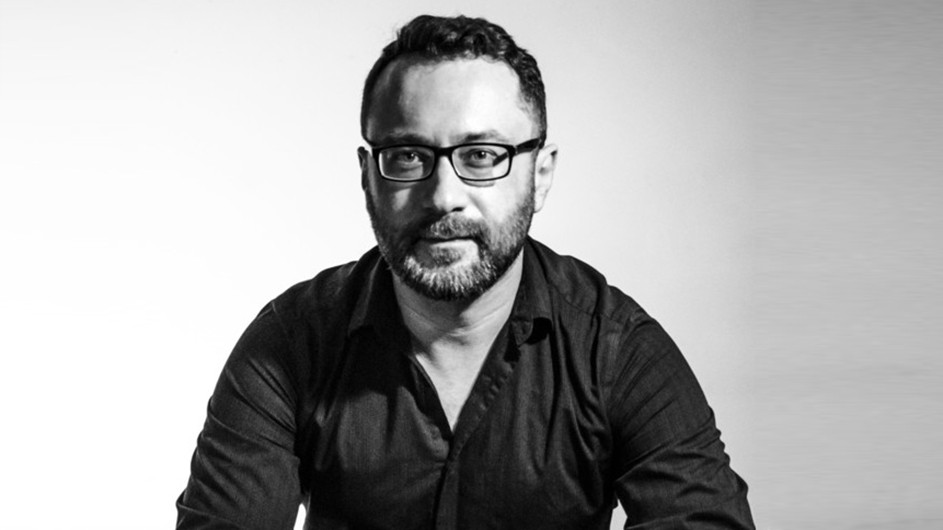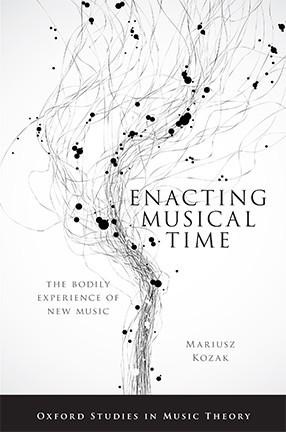Mariusz Kozak's New Book Explores Movement and Music
Why do we tap our feet or dance in time to the beat?

In a discussion with Columbia News, Mariusz Kozak, a professor in the music department, sheds some light on how his academic research is enriched by his teaching and how living in New York affects his work. He also reveals why we move when we hear music, which he explores in his new book, Enacting Musical Time: The Bodily Experience of New Music.
Q. What is musical time?
A. In my work I draw on ideas from embodied and enactive cognition and think of time as a relationship that we have with the world in which we live. Each action we perform (including inaction) brings time into being by organizing this world relative to our perceptual and cognitive capacities (such as memory and anticipation). Musical time is an aesthetic extension of this idea; musical time emerges as a result of bodily interactions in response to patterns of sound. For example, tapping one’s finger to the beat is a temporalizing act that marks a particular sound as having some kind of significance (namely, the beat), and orients that sound within a vast network of embodied memories and anticipations that listeners bring to bear.
Q. Why do people move to music?
A. To ask "Why do we move to music?" is like asking "Why do we drink out of cups?" or "Why do we sit in chairs?" The answer is that we perform these actions because we designed and created these objects to fulfill precisely those functions: drinking and sitting. Music is exactly the same: One of the most basic functions of music, the world over, is to provide a sonic template for the enactment of bodily movements and associated emotional states. (Western art music—i.e., classical music—is an aberration with its requirement to sit still.) So a more interesting question is one that switches the key terms: 'Why do we create music to move?' In other words, why do we use these particular combinations of sounds to store memories of body movements that, for whatever reason, have special value in our culture and society? The answer to this is something I’m in the process of figuring out.

Q. What is the “new music” that is referenced in your book’s subtitle?
A. In the context of the book, new music refers to recent Western classical art music. I had to limit the scope because to write a comprehensive monograph on temporality in music would take several lifetimes. I chose new music because I think composers nowadays are drawing on an assortment of ideas from philosophy, the sciences and non-Western sources to create new ways of experiencing time itself. The linear, objective, Newtonian time—time incessantly moving forward independently of an observer—is being replaced by other concepts, including non-linearity, cyclicality, depth, even verticality (my last chapter goes into this in considerable detail). The bodily experiences of these “alternative” times are not limited to movement, and can include standing still. Composers are creating new associations between temporality and sound.
Q. How does the intersection of teaching and writing affect you?
A. The ideas I write about closely inform my teaching. I’m especially interested in breaking down old methodologies and dissecting old concepts to find new meanings in our encounters with music. Reflecting that, I try to teach a broad assortment of theoretical approaches that can help students hear and talk about music in different ways. This then feeds back into my academic work, which is shaped to a great extent by my interactions with students and the conversations we have in and out of the classroom. Columbia is a particularly good place for this, since I get to interact with students in different departments, including not just those in the humanities, but also the sciences and engineering. This keeps me grounded in important ways because I feel in touch with the latest theoretical and methodological developments in these disciplines, and I’m able to relate my ideas to a wider audience, which can at times be quite skeptical of what it is I’m trying to say.
Q. What are you teaching now?
A. This semester I’m teaching "Music Humanities" and a graduate seminar titled "Theorizing Music Temporality." Next semester I’ll be teaching "Music Theory I" and a new course called "Introduction to Cognitive Musicology."
Q. How does living and working in New York influence your work?
A. I have ready access to some of the best new music composers and ensembles. I’m able to talk and collaborate with scholars at places like NYU, CUNY or Princeton. Columbia too has created platforms for interdisciplinary collaborations, for example, with the establishment of the Center for Science and Society, or the Presidential Scholar in Society and Neuroscience fellowship (where I am currently mentoring Matthew Sachs, a neuroscientist interested in musical emotions). I can attend countless lectures, panel discussions, exhibitions, book launches and other events, all of which help shape my own interdisciplinary ideas.
Q. What are you working on now?
A. I’m starting a new project that takes a closer look at the history of the cognitive science of music in the United States since the 1950s. In particular, what interests me is how ideas from informatics, cybernetics, artificial intelligence and robotics have shaped the study of the musical mind, and especially of musical emotions. I’m examining all of this through the lens of a metaphor of the brain as a computer. I take this metaphor seriously, and look critically at how thinking of the brain as a computational, information-processing machine has both encouraged and constrained certain kinds of knowledge about the musical experience of listeners. This project combines history of science with media archaeology, and my goal is to develop, or, at the very least, suggest some avenues for a non-computational, ecological theory of musical emotions. Next year, I’m going to be a fellow at the Heyman Center for the Humanities, which will allow me to do most of the research on this project.